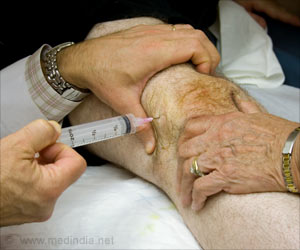Excessive and regular use of high heels among men and women is the leading cause for premature Osteoarthritis, according to many health experts.

"High heels are the growing cause of premature osteoarthritis. Wearing high heels has also been associated with plantar fasciitis -- one of the most common causes of heel pain. It involves pain and inflammation of a thick band of tissue," said Dr. Abhay Nene, consultant spine surgeon, Wockhardt Hospital in Mumbai.
He also said that one should wear heels of one inch maximum and that the duration for which a high heel is worn is directly related to the pain. "It is recommended that high heels should be worn when one is planning to walk less like getting out of car for a party venue and then walking back to car for home. The longer one wears high heels, the more are the chances of foot injury," added Dr. Nene.
Dr. Nene also said that wearing high heels has been linked to knee pain and premature/early arthritis of the knee joints. American Osteopathy Association reports that one in 10 women wear heels, and most of them develop severe pain and swelling in the fore foot, hind foot, ankle, knees, hips and spine. "Knee transplant can be a solution for a knee effected by osteoarthritis but it can’t be considered a solution for knee pain caused by high heels. If one can avoid knee pain by wearing wedges with limited heel height, instead of high heels, then why undergo a surgery."
"A recommended sole should be flexible at toe box. It should be light and reciprocating bare foot walking as close as possible. A thick sole may add to the weight of the shoe," said Dr. Nene.
Saurabh Dhamija, head of the Kolkata-based Downtown hospital said that a rigid platform may not be bio-mechanically suitable for foot because it is too hard. "The normal weight bearing on foot is like a springy action on the end of normal arches of foot, whereas a rigid heel may counteract this mechanism causing heel and joint pains," he added.
Advertisement
Source-IANS










